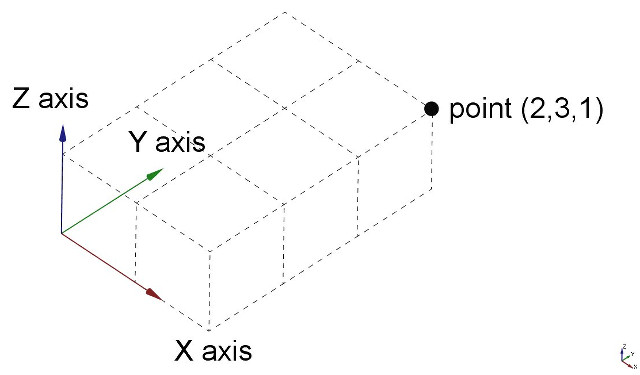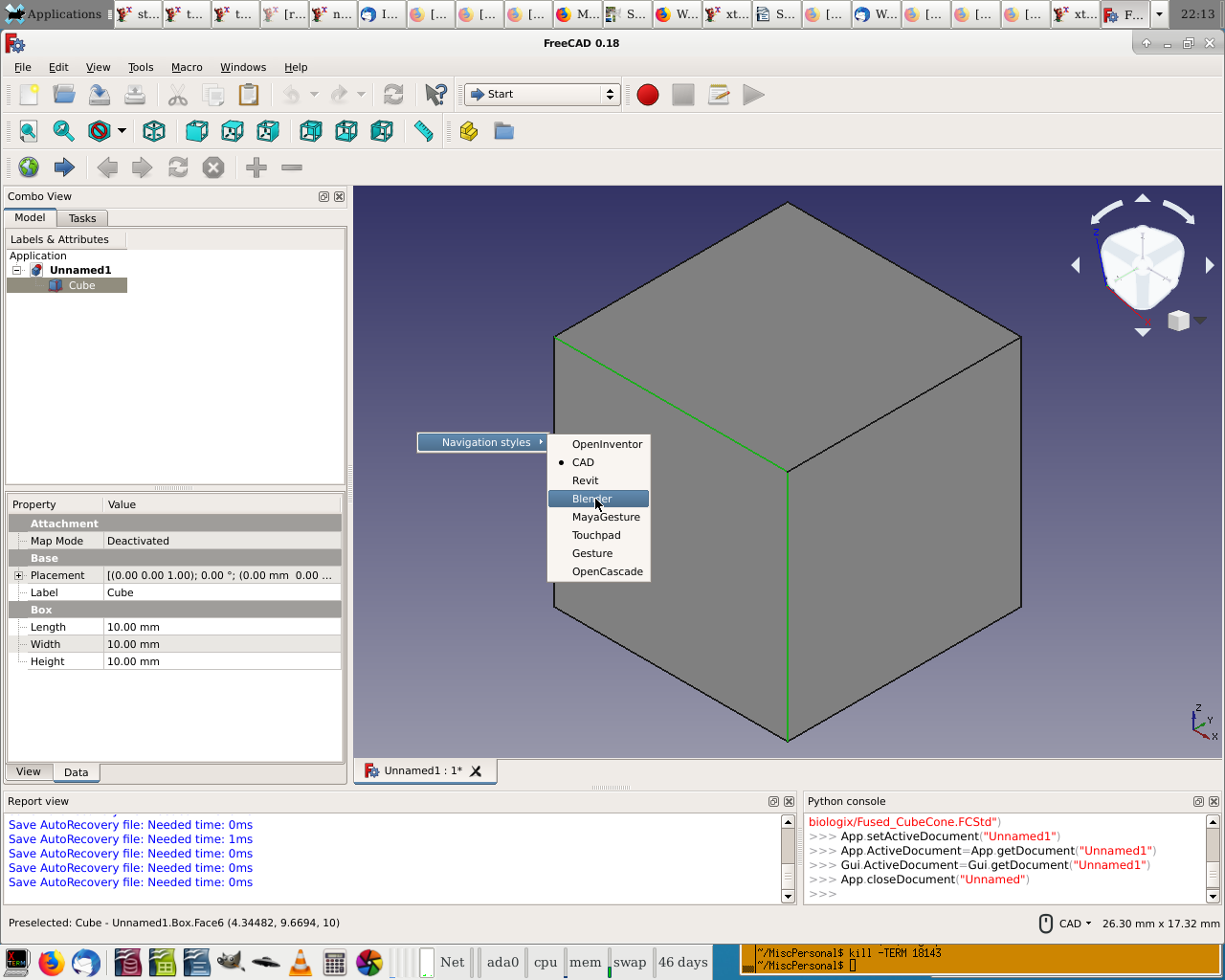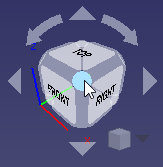Manual:Navigating in the 3D view/pl: Difference between revisions
(Created page with "Nawigacja w widoku 3D FreeCAD może odbywać się za pomocą myszki, urządzenia Space Navigator, klawiatury, touchpada lub ich kombinacji. FreeCAD implementuje kilka trybów nawigacji, które określają sposób wykonywania trzech podstawowych operacji manipulacji widokiem (przesuwanie, obracanie i powiększanie), a także sposób zaznaczania obiektów na ekranie. Tryby nawigacji są dostępne z ekranu preferencji lub bezpośrednio...") |
(Created page with "Każdy z tych trybów przypisuje różne przyciski myszki, kombinacje myszka + klawiatura lub gesty myszki do tych czterech operacji. Poniższa tabela przedstawia główne dostępne tryby:") |
||
| Line 36: | Line 36: | ||
[[Image:FreeCAD-v0-18-NavigationModePopup.png]] |
[[Image:FreeCAD-v0-18-NavigationModePopup.png]] |
||
Każdy z tych trybów przypisuje różne przyciski myszki, kombinacje myszka + klawiatura lub gesty myszki do tych czterech operacji. Poniższa tabela przedstawia główne dostępne tryby: |
|||
Each of these modes allocates different mouse buttons, or mouse + keyboard combinations, or mouse gestures, to these four operations. The following table shows the principal available modes: |
|||
{| class="wikitable" style=" width: 100%;text-align:center;" |
{| class="wikitable" style=" width: 100%;text-align:center;" |
||
Revision as of 14:03, 6 February 2024
- Słowo wstępne
- Odkrywamy FreeCAD
- Praca z FreeCAD
- Skrypty środowiska Python
- Społeczność
Słowo o przestrzeni 3D
Jeśli jest to twój pierwszy kontakt z aplikacją 3D, musisz najpierw zapoznać się z niektórymi pojęciami. Jeśli nie, możesz spokojnie pominąć ten akapit.
Przestrzeń 3D w FreeCAD jest to przestrzeń euklidesowa. Ma punkt początkowy i trzy osie: X, Y i Z. Jeśli spojrzysz na swoją scenę z góry, konwencjonalnie oś X wskazuje w prawo, oś Y do tyłu, a oś Z do góry. W prawym dolnym rogu widoku FreeCAD zawsze możesz zobaczyć, skąd oglądasz scenę:
Punkt, w którym spotykają się trzy osie, to punkt odniesienia położenia. Jest to punkt, w którym wartość wszystkich współrzędnych wynosi zero. Dla dowolnej osi, ruch w jednym kierunku zwiększa wartość współrzędnej, a ruch w przeciwnym kierunku zmniejsza wartość współrzędnej. Każdy punkt każdego obiektu istniejącego w przestrzeni 3D można zlokalizować za pomocą jego współrzędnych (x,y,z). Na przykład punkt o współrzędnych (2,3,1) będzie znajdował się w odległości +2 jednostek na osi X, +3 jednostek na osi Y i +1 jednostki na osi Z:
Możesz patrzeć na tę scenę pod dowolnym kątem, tak jakbyś trzymał kamerę. Kamerę można przesuwać w lewo, w prawo, w górę i w dół (panoramowanie), obracać wokół punktu, na który jest skierowana (obracanie) oraz przybliżać lub oddalać od sceny (zoom).
Widok 3D FreeCAD
Nawigacja myszką
Nawigacja w widoku 3D FreeCAD może odbywać się za pomocą myszki, urządzenia Space Navigator, klawiatury, touchpada lub ich kombinacji. FreeCAD implementuje kilka trybów nawigacji, które określają sposób wykonywania trzech podstawowych operacji manipulacji widokiem (przesuwanie, obracanie i powiększanie), a także sposób zaznaczania obiektów na ekranie. Tryby nawigacji są dostępne z ekranu preferencji lub bezpośrednio poprzez kliknięcie prawym przyciskiem myszy w dowolnym miejscu na widoku 3D:
Każdy z tych trybów przypisuje różne przyciski myszki, kombinacje myszka + klawiatura lub gesty myszki do tych czterech operacji. Poniższa tabela przedstawia główne dostępne tryby:
| Mode | Pan | Rotate | Zoom | Select |
|---|---|---|---|---|
| OpenInventor | 
|

|

|
Hold Ctrl + drag 
|
| CAD (default) |  or or 
|
 or or 
|
 or or 
|

|
| Blender | Hold Shift + drag  or drag or drag 
|

|

|

|
| Touchpad | Hold Shift + drag 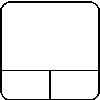
|
Alt + 
|
PgUp / PgDn | 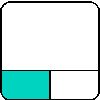
|
| Gesture | drag 
|
drag 
|

|

|
| OpenCascade | 
|

|

|

|
Alternatively, some keyboard controls are always available, no matter the navigation mode:
- Ctrl +
and Ctrl +
to zoom in and out, respectively.
- The arrow keys,
, to shift the view left/right and up/down
- Shift +
and Shift +
to rotate the view by 90 degrees
- The numeric keys,
, for the seven standard views:
Isometric,
Front,
Top,
Right,
Rear,
Bottom, and
Left
- VO will set the camera in
Orthographic view.
- While VP sets it in
Perspective view.
- Ctrl will allow you to select more than one object or element
These controls are also available from the View menu and some from the View toolbar.
In the default setup, there is a Navigation Cluster in the upper right corner of the 3D display. This may be used to rotate the displayed object by a fixed amount, reset the display to one of several standard views, and change the display mode.
When using the navigation cluster, a control point will turn light blue when the pointer is hovering over a sensitive area. If the area below the pointer does not change color, clicking on it will have no affect. As of this writing (v0.18), there are some registration issues which prevent all parts of some control points from being active.
Clicking on a face will switch the view to that face; clicking on a corner will switch to a view with that corner pointing towards you.
Clicking one of the four triangles will rotate the view 45 degrees in the indicated direction. Clicking one of the two curved arrows at the top will rotate the view 45 degrees in the indicated direction around a line pointing towards you.
The navigation cluster may be moved to any part of the 3D display by dragging. The drag (left) mouse button must be pressed inside the cube itself to initiate a drag. The structure will not begin moving until the pointer is dragged outside the cube.
There is a smaller mini-cube in the lower right of the cluster which activates a drop-down menu allowing you to switch the viewing mode.
Selecting objects
Objects in the 3D view can be selected by clicking them with the corresponding mouse button, depending on the navigation mode (described above). A single click will select the object and one of its subcomponents (edge, face, vertex). Double-clicking will select the object and all its subcomponents. You can select more than one subcomponent, or even different subcomponents from different objects, by pressing the CTRL key. Clicking with the selection button on an empty portion of the 3D view will deselect everything.
A panel called "Selection view", available from the View menu, can also be turned on, which shows you what is currently selected:
You can also use the Selection View to select objects by searching for a particular object.
Read more
